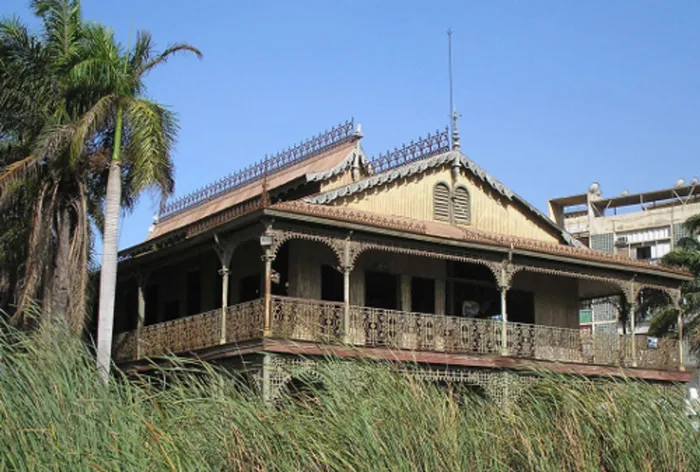New life for once-rusty Iron Palace

Luanda - A unique Iron Palace in Luanda, once a crumbling legacy of the school of Gustave Eiffel, has been painstakingly restored as part of a city-wide effort to rebuild after decades of civil war.
The capital of oil-rich Angola is in the midst of a building boom, but the renovation of the Palacio de Ferro is the latest in a string of projects to help rebuild war-damaged buildings, rather than just build new ones.
Packed a pre-fab, the palacio was sent by boat from France in the 19th century, originally destined for Madagascar.
The strong Benguela currents of Angola's notorious Skeleton Coast scuppered the boat's progress, and the colonial Portuguese rulers claimed the ship and its contents.
No pictorial records of the palacio in its hey-days exist, but the two-story iron structure was believed to have been used as an arts centre by the Portuguese until they left in 1975 when Angola claimed independence.
"There is quite a lot of mystery surrounding the palacio, and there are no books or records on it, but we think it dates back to around the 1890s," Emanuel Caboco, of Angola's National Institute of Cultural Heritage, said.
"We had thought it was designed by Gustave Eiffel, but we've since been told the palacio was more likely to have been someone from his design school because of the dates," he said, referring to the French engineer and architect responsible for Paris' iconic Eiffel Tower.
"We know very little about how it came here or why they didn't send it on to Madagascar because there are no books about it, or none that still exist."
During the southern African country's 27-year civil war, the palacio - like most buildings - was neglected and fell into disrepair.
It's a unique piece of Luanda's history.
Until a few years ago its leaking, rotting interior was used by rough sleepers and the surrounding area as a car park.
Now with investment from Angola's para-statal diamond company Endiama, the palacio is once again worthy of its regal name.
Clearing out the debris and rebuilding the crumbling structure has taken nearly two years. The work has been overseen by Brazilian construction company Odebrecht, who have transported many of the reclaimed iron balustrades and floor tiles to Rio de Janeiro for individual renovation.
"First we had to take apart what was left of the building piece by piece," said Alan Cunha, an Odebrecht engineer who worked on the restoration.
"Some bits were in good condition but other parts needed repairing, so we sent those to Brazil by plane where they were fixed up and enough replica pieces were made to rebuild the palacio as it once was and they were shipped back here to Angola.
"It was extremely rewarding to work on this project to help restore a piece of Angola which suffered so much during the civil war. This building will be a point of social reference for the future."
The bright yellow walls of the palacio now stand in downtown Luanda as a symbol of the city's rebirth, though no one is certain yet how the building will now be used.
Some reports have suggested the palacio might become a diamond museum, others a restaurant because the top floor of the building has been fitted out to accommodate an industrial kitchen.
"This is up to the Ministry of Culture to decide because they are in charge of the project, we have just put up the money," said Endiama spokesperson Claudia Caldeira.
Endiama is tight-lipped about the cost of the restoration project - believed to be millions of dollars - which has also included the construction on the same site of two pavilions to be used as a gym and a recreation centre.
The work is due to be complete in April or May, Caldeira said.
"Endiama is very proud to have been part of restoring the palacio because it's such a unique piece of Luanda's history and it's not every day you get a company funding this type of restoration."
"It's going to look absolutely fantastic when it's finished and we know people will really like it."